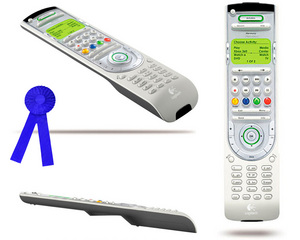I have had tons of fun riding in my friend’s inflatable rubber boat. He has practically no maintenance costs, no registration fees or storage problems. When it comes out of the water, he allows it to dry, deflates it and loads it into his truck. At home, it folds up into in a plastic container with wheels.
It’s wonderful to sit on the water and watch the clouds go by. Carrying the 60 lb. boat filled with 30-40 lbs. of gear is no fun. I decided to sit down with my sketch pad, measuring tape and ideas. My friend needed a dolly for the boat, but most are expensive and I could not find anything online made for a rubber inflatable boat.
My friend listened intently one day when I explained I could build a lightweight dolly out of PVC. He could wheel the boat to the water, launch it, break the dolly down and take it into the boat. He asked how much it would cost. When I said less than $50, he all but threw me into his truck and drove me to the DIY store.
He is truly happy with his PVC dolly. His friends are asking for the secret. There really is no secret.
No exact measurements are given here, as rubber boats come in different sizes. Each boat should be measured individually. I measured my friends boat, and we decided to make a dolly for a 6′ by 8′ boat.
You will need:
- PVC cement
- Hacksaw
- Sandpaper
- Several poles of 1 ½” PVC pipe – I like to use schedule 40 because it’s stronger
- 1 three-way connector (also called a “wye” connector)
- 9 each t-connectors
- 2 each 45º connectors
- 6 each 90º connectors
- 2 each 4 ½” carriage bolts (see steps for measuring for this bolt)
- 6 each washers and 2 cap nuts for the carriage bolts above
- 4 each 2″ long carriage bolts, 3/8″
- 8 each 3/8″ washers
- 4 each cap nuts, 3/8″
- Fabric to make duffel bag (optional)
- Cardboard or newspaper
- Marking tools and measuring tape
Step One:
After measuring my friend’s boat, I decided to make the dolly 6′ by 8.’ I drew a 6′ by 8′ rectangle on the cardboard.
Step Two:
I marked one end of the rectangle “front” and the other end “back.” At the back, I taped two 90º connectors at the corners. I placed two t-connectors at equal distances between them. The insertion holes will face up when finished.
One foot away from the corners, I placed two t-connectors at the sides. The insertion holes will face downward. I measured 4″ along the sides and placed two a t-connector on the lines.
At the front corner, I drew two 45º angle lines away from the front until they connected. I placed a 45º connector at each of the junctions.
Six inches away from the 45º connectors, I placed 4-way connectors. The insertion holes will point downward. There will also be a cross beam.
The next step was to measure between this connector and the t-connector. I placed another t-connector halfway between them.
You should have 3 cross beams.
Step Three:
At the junction where the two 45º lines meet, I placed a three-way connector connector. Two openings face along the lines and the other faces forward. Against the three-way connector opening, I placed another t-connector.
Two inches away from each side of the t-connector, I placed a 90º connector. I measured 4″ away from the corners and finished with two more 90º connectors so a rectangle was created.
Step Four:
My friend’s boat is 10″ high at the sides. I cut 2 pieces of pipe, each 12″ high and cemented an end cap on each. I set these aside. More about them later.
Starting at the back, I measured between the connectors and made sure to add enough length for insertion. The connectors should be evenly spaced.
Note: It is essential that the measurements of the side poles, spaces between the connectors and the diagonal measurements match, including the handle. The boat dolly will not handle well if it does not.
Do not cement anything until told to do so. For now dry fit everything.
Cut the pipes for the back and insert them into the connectors.
Step Five:
Measure between the connectors along the sides. Cut the pipes and insert into the connectors.
Step Six
Measure across the t-connectors to the inside of the rectangle. Again, ensure the measurements are even. Cut the pipes and insert into the connectors.
Step Seven:
Measure from the 45º connectors to the three-way connector. Cut and insert the pipes.
Step Eight:
Now we’ll make the handle. Cut a 2″ long piece of pipe and insert it into the front facing three-way connector connection. Attach the t-connector to the other end. Cut two more pieces of pipe, each 5″ long and insert into the t-connectors to the sides. Attach 90º connectors to each end. Cut two pipes, each 5″ long. Attach to the connectors and top off with the last two 90º connectors. Measure between the last two connectors, cut the pipe and insert.
Step Nine:
Before cementing, measure across the diagonal rectangle of the handle. Both diagonal measurements should match. If they do not, adjust now.
If they do, cement the handle together only to the three-way connector connector. Do not cement anything to the two three-way connector openings.
Step Ten:
Drill a hole for the 3/8″ carriage bolts through the three-way connector and the 45º connectors on the shafts. Drill all the way through the connectors and the pipes.
On the non-drilled part of the 45º connectors, cement the shafts on.
Cement the connectors and pipes across the back. The t-connectors should point up.
Cement each cross beam to the t-connectors and the 4-way connectors. Ensure the insertion points that should be facing downward are facing down before cementing.
Cut two 14″ pipes and cement end caps on them. Measure the diameter of the axle opening to size for the carriage bolt noted in the supplies list.
Do not cement the side pipes.
Step Eleven:
Insert the pipe into the t-connector at the rear. Mark a place for the wheel. Remove the pipes and drill all the way through the pipe. Insert into the connector. Thread a washer onto a carriage bolt, then the wheel, another washer, the pipe, the last washer and the cap nut.
Step Twelve:
Moving to the last two t-connectors, lift the frame until it is level. Measure the distance from the frame to the ground. Cut 2 pieces of pipe and insert them into the connectors. Cement end caps on them.
Remember the two pieces of pipe set aside in step 4? Insert them into the two connectors pointing up at the back.
The dolly will now carry a boat.
Take apart, measure the pieces and purchase or make a duffel bag to carry your new dolly.
This has never pulled apart, no matter what kind of rough terrain we’ve taken the boat over. If necessary, the connectors can be drilled for additional carriage bolts.
It’s nice not to have to carry everything.
Source: The author has over 40 years of experience in designing and building furniture, outdoor items and more.





